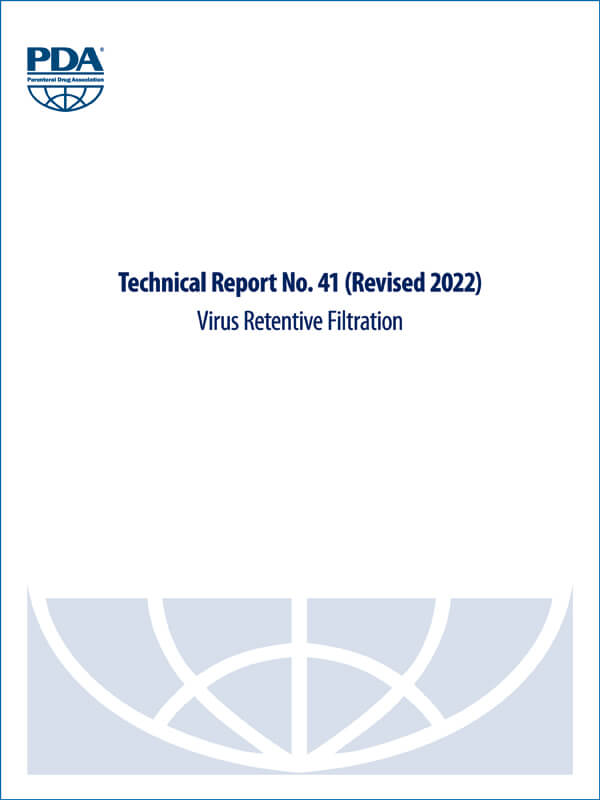TR-41: The 2022 Revision
 Virus retentive filters (VRFs) are key to minimize risks from virus contamination of biotechnology and plasma derived medicinal products. These filters effectively remove a range of viruses from manufacturing process fluids through robust size-based sieving.
Virus retentive filters (VRFs) are key to minimize risks from virus contamination of biotechnology and plasma derived medicinal products. These filters effectively remove a range of viruses from manufacturing process fluids through robust size-based sieving.
Just this month, PDA released a 2022 revision of Technical Report No. 41: Virus Retentive Filtration. The previous version of TR-41 (2008) summarized the history of virus filtration, currently available VRFs and prefilters, validation approaches, sterilization/sanitization approaches, point of use and virus filtration integrity test methods and study models. While the 2008 version was still timely and relevant 15 years later, an update was warranted to address future trends, recently identified gaps and emerging filtration technologies. It also removed some outdated some discussions. Specifically, the 2022 version updates or includes the following:
- Barrier technology – media treatment
- New product classes – cell and gene therapy
- New filter types and brands
- New manufacturing modalities (e.g., QbD/design spaces; continuous processing, etc.)
- Model FMEA for end users implementing virus retentive filters
Technological gaps identified since 2008 (e.g., fluid stop/start)
A year ago, PDA promulgated ANSI/PDA Standard 04-2021: “Phage Retention Nomenclature Rating for Small- and Large-Virus Retentive Filters.” The core methods for both classes of VRFs had been included as an appendix to the 2008 version of TR-41. However, refining and harmonizing the methods was needed and involved a five-year effort by an expert committee from industry, government and a consulting organization. The standard is intended to provide VRF suppliers with common methodology and nomenclature for large- and small-virus-retentive filters, using bacteriophage as a model. It also guides users/manufacturers when selecting the most appropriate VRF for their specific manufacturing process.
Specifically, the new American National Standard (ANS):
- Provides methods for preparing and enumerating suitable sized bacteriophage (PP7 and PR772 as models for small and large viruses, respectively) as test items, and
- Provides detailed methods and acceptance criteria for testing bacteriophage retention by large- and small-virus retentive filters,
- Guides selection of appropriately rated filters as defined by suppliers in a standardized manner using a risk-based approach.
- However, it is not a substitute for process validation for viral clearance claims.
Finally, to augment these PDA efforts, a team for subject matter experts from CDER/FDA, Parexel International Corp., Amgen Inc., Genentech Inc. and NGM Biopharmaceuticals co-published a comprehensive review article on VRF technology in Biotechnology and Bioengineering, “Virus filtration: A review of current and future practices in bioprocessing”. The review compliments the 2022 TR-41 revision by summarizing the history of virus filtration, currently available VRFs and prefilters, and VRF integrity test methods and study models. There is also discussion of the scientific literature behind the current understanding and gaps with an eye toward future trends and emerging filtration technologies.
PDA fully understands that providing members with timely advice is critical when developing comprehensive virus risk mitigation strategies for biopharmaceuticals and biologics. The PDA membership has deep knowledge, experience, and leadership in viral clearance in bioprocessing, including virus retentive filtration.
The new 2022 revision of TR-41 is the latest addition to this knowledgebase and will undoubtedly greatly assist the PDA membership for the next decade and beyond.


